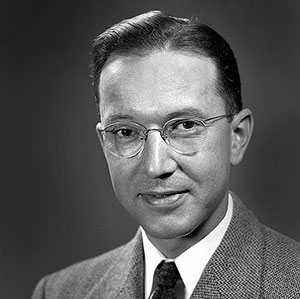William “Willy” Higinbotham (1910-1994) was an American physicist.
During the war, Higinbotham worked at Los Alamos as leader of the Electronics Group in the Weapon Physics Division. The Trinity test, which he witnessed, had a profound effect on his psyche, and he became strongly convinced of the need for an anti-nuclear proliferation movement.
The Federation of American Scientists
Soon after the war ended, Higinbotham co-founded the nuclear non-proliferation group the Federation of American Scientists (FAS). In February of 1946, Higinbotham officially incorporated the nonprofit organization by signing the Certificate of Incorporation in Washington, DC. Higinbotham served as the first Chairman of the FAS for six months before Robert Wilson, the first elected Chairman, took over. Then, Higinbotham became CEO, or Executive Secretary, for the next year and a half. In the years following, he was elected Chairman on two occasions – 1950 and 1965 – and was elected to the FAS Council and the FAS Fund Board of Trustees during the ’70s and ’80s.
Major successes of the FAS include the defeat of the May-Johnson Bill, which would have given the military control of nuclear research, and the passage of the McMahon/Atomic Energy Act of 1946, which established the U.S. Atomic Energy Commission. Former Chairman Robert Wilson said, “FAS would not be in existence today if Willy had not shepherded this organization through its first 25 years.”
Later Years
In 1947, Higinbotham took a job at Brookhaven National Laboratory under the auspices of the Atomic Energy Commission. He worked there until his retirement in 1984. In 1958, he developed what is sometimes considered the first videogame, Tennis for Two. From 1974 onwards, Higinbotham held a position as the technical editor of the Journal of Nuclear Materials Management. He died in Gainesville, Georgia in 1994.
For more information of Higinbotham, read “William Alfred Higinbotham: Scientist, Activist, and Computer Game Pioneer” published by the Institute of Electrical and Electronics Engineers.





